![]()
Steve Sasson is an electrical engineer who invented the digital camera while working for Kodak. The Rochester, New York, company, which had made its fortune by selling photographic film and paper for most of the 20th century, did not think that Sasson’s digital camera had any place in photography, and that lack of foresight ironically put Kodak out of business.
In July 2022, Kodak announced that it is repurposing some of the expensive, high-tech machines used to manufacture its photography film to produce batteries for electric vehicles (EV).
A Young Engineer Finds a Job at Kodak
In June 1973, Sasson (born 1950) graduated with a master’s degree from Rensselaer Polytechnic Institute in upstate New York. The same month he landed his first [and last] job at Kodak.
Kodak was not typically hiring electrical engineers. They were hiring chemical engineers and mechanical engineers because cameras were, of course, mechanical, and photo processing equipment required those two disciplines. It became pretty clear then that the bulk of the unit cost of manufacturing a consumer camera was going to electronic and electrical components like film advances, exposure controls, and flash controls. All of these were being implemented electronically, putting a new emphasis on hiring electrical engineers.
“When I interviewed there, I went to several locations at Kodak,” Sasson tells PetaPixel. “And when I went for my end-of-the-day summary, they asked me which area I was most interested in, and I was interested in the research lab. They took on all kinds of problems and challenges, and of course, I liked that. It was interdisciplinary with mechanical engineers, physicists, and mathematicians with an engaging environment, and that’s why I chose it to start my career.”
Playing with a CCD Sensor
Sasson started work at the applied research laboratory in the apparatus division. This laboratory was involved with anything to do with equipment and had a far-ranging charter. It helped resolve technical problems and did research into new ideas.
One day Sasson’s boss came up with a work proposal.
“He was leaning against the file cabinet in my office while offering me a choice of two projects to work on as I was between jobs,” says Sasson. “He said, ‘you could do modeling for exposure control for XL movie cameras or look at this new charge-coupled device. I’m curious how it works or what we could do with it.’
“I was in the electronics group — as I was an electronics engineer. It was a new type of device that we had not worked with before. It had to do with a two-dimensional exposure surface, much like a film, but it was all electronic.
“I said I would be interested in working with the charge-coupled device based on my experience at college. He said, ‘Great get one and play with it and see if there is anything useful or what we might be able to do with it’.”
A charge-coupled device (CCD) is an integrated circuit containing an array of coupled capacitors — one that, along with CMOS, have become widely used as digital camera imaging sensors.
Inventing the Digital Camera in Two Years
Sasson went to work feverishly on the CCD and created a crude, largish representation of a digital camera.
“I stole the lens from our used parts bin on the manufacturing floor of the XL movie cameras,” explains Sasson. “Because the super eight movie format was larger than the active area of the CCD, I could place this in the film plane of the XL movie camera assembly, and it would work.
The camera had only an electronic shutter and no mechanical shutter, with one shutter speed of 1/20s (or 50 milliseconds). It had an infrared (IR) blocking filter in front of it as it was very sensitive to IR, and that was a problem with incandescent lighting.
Sasson added a tape assembly, although he had thought of building a memory card to record the image, and it became functional in December of 1975. The digital camera was invented — Sasson had made his major discovery almost within two years of starting work at Kodak.
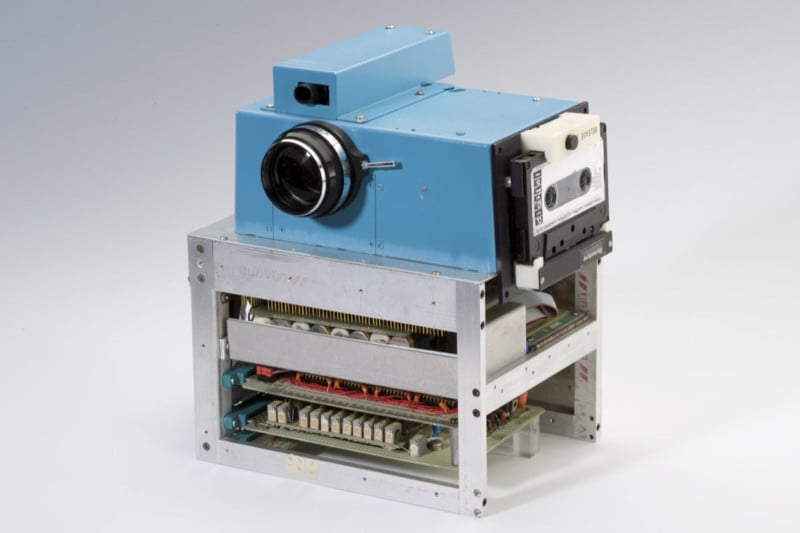
“The reaction I got from Kodak management was one of curiosity and skepticism as it did not feel like a major invention,” says Sasson. “There was not a real feeling that we had invented something. The feeling was that this was a very scary look at what could be possible in the future. As the company’s entire business model was focused around sensitized goods, proposing that they not use any of that was not popular.”
Kodak was hesitant to cannibalize its cash cow businesses in film photography with an unproven new technology.
“I would walk in with my crazy-looking camera, which was about the size of a toaster, but I could hold it,” Sasson says. “I took pictures of people in the room before I said anything. Then I took out the tape that the digital information was stored on and put it in the playback unit when a picture popped up on the TV screen. And that generally got everybody’s attention.”

“Indeed, they didn’t ask me how this worked,” Sasson says. They simply asked me why anybody would want to take a picture this way when there was nothing wrong with conventional photography. Nobody [including his bosses at Kodak] was asking me to develop this camera. In fact, nobody even knew that I was developing this camera.
“So, the dialogue in those many meetings in the spring and summer of 1975 centered around whether this could be a viable form of [photography]. If it ever was, how long would it take? What would it take to require it to get there? We probably had some of the most in-depth digital photography discussions in that conference room in 1975.”
Kodak management may have been reluctant to dive headfirst into digital photography, but Sasson himself continued down the rabbit hole that would one day become the ubiquitous way photographs are made.
“I was fascinated with the idea of filmless photography and that I wouldn’t have to use consumables to take photos. I worked in digital photography from that day in 1975 till I retired. So, I have worked in digital photography longer than anybody, which has motivated me a lot.”
The young inventor was asked all the time [at Kodak] when he thought this would be viable for consumers. And, of course, he did not know.
“You get desperate when you ask questions that you cannot answer. I called the research labs and asked how many pixels I needed to make an equivalent of a film quality 110 film photograph. It was the worst consumer format I could picture, so I went for the lowest level. They said a million pixels, 2 million if you want color. So, I had 10,000 pixels in black and white, and I had to get to 2,000,000 in color. I used Moore’s law and came up with 15-20 years. It turned out to be not a bad prediction for all the wrong reasons.
“I didn’t know everything that would happen in between, but we launched our first digital camera 18 years later. So wasn’t a bad prediction, just a lucky one.”
The First Digital Portrait is No More
The first portrait was of a technician, Joy Marshall, working at the teletype a few doors down from the lab.
“She knew us as the crazy guys in the back lab. There was just nothing to take a picture of in our lab. So, I picked up the camera, walked a short way down the hall, saw her there, and asked if I could take a shot of her.
“It was an odd-looking device with all the electronic things hanging out, a lens on the front of it, a viewfinder. She sat there, and I took a head and shoulders shot of her, and that was the first snapshot taken with a digital camera of a person.”
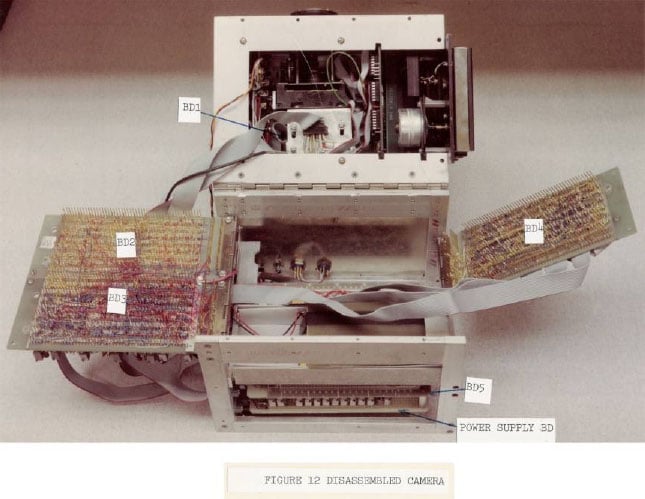
The first digital photographer took out the camera back and removed the tape. He put it in the playback machine and what he saw on the TV was her head and shoulder-length hair, which was black. That was well defined, but her face was completely static, wholly unrecognizable. She had followed him back and was standing in the entranceway of the lab when the picture came up.
“Needs work,” she said, before turning around and walking away.
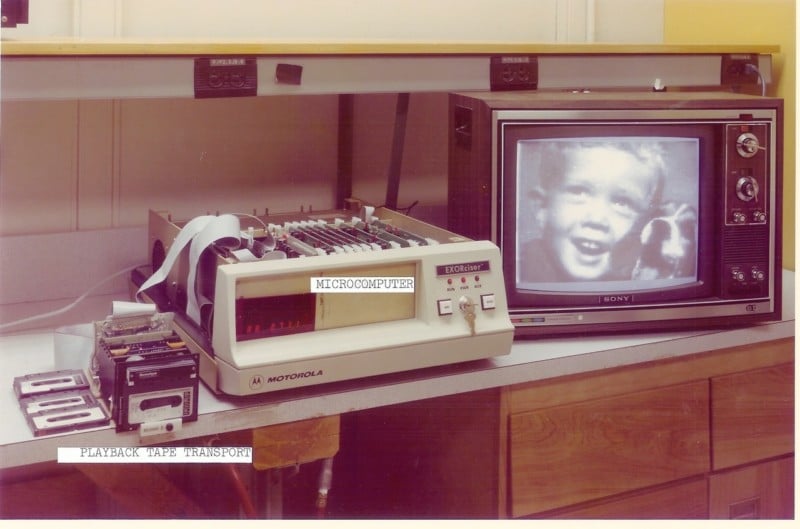
“I had designed the playback unit,” remembers Sasson. “Each pixel was digitized to four bits, with all four being zero when it was black and all four being ones when they were white. I had serially encoded the bits, put them on the tape, and read them off the software I had written, which was a very rudimentary microprocessor at the time.
“I had accidentally reversed the order of the bits in my head. So, if all the bits were zero and black, it did not make any difference what the order was, so they showed up as values. If they were all white with lighter tones, it didn’t make any difference and they showed up as white.
“That’s why the black hair and white background made sense, so we could see that the image was correct geometrically. But all the in-between tones represented by variations of ones and zeros were reversed, so it did not make any sense.
“It took about an hour to figure that out. Then I reversed some wires, and it was easier to reverse wires than change the software then, and the pictures showed up in proper form.
“The blacks and whites were all in the correct position, but any in-between tones of the four bits with the 16 levels of gray were mixed up. You could see that her face and the background were all right. We were pleased with that. It showed us that all the pixels were going in the right places, which was a big part of the success. But the continuous part of the image was screwed up.
“We had worked for a year developing details of this imaging chain. Everything had to be created from scratch. There was nothing I could lift from anything. We had to develop the circuitry, build it into the camera on the playback unit test, and then connect it to the whole system to see if we could get that portion of the signal chain to work.”
Unfortunately, that first digital portrait photo was immediately lost to history.
“We didn’t save this image,” Sasson says. “I didn’t take note of it other than that I was thrilled that the camera worked, and we spent the next six months trying to improve the performance. If he had saved that image, it would probably have had some historical significance [and a lot of money as the first digital Mona Lisa!].
Image Size and Storage
The file size of these first digital images was 10,000 pixels. It was a hundred pixels on a line, and 100 lines, with each pixel, digitized to four bits. If you put it into bytes, it would be 5,000 bytes or 5 KB (kilobytes).
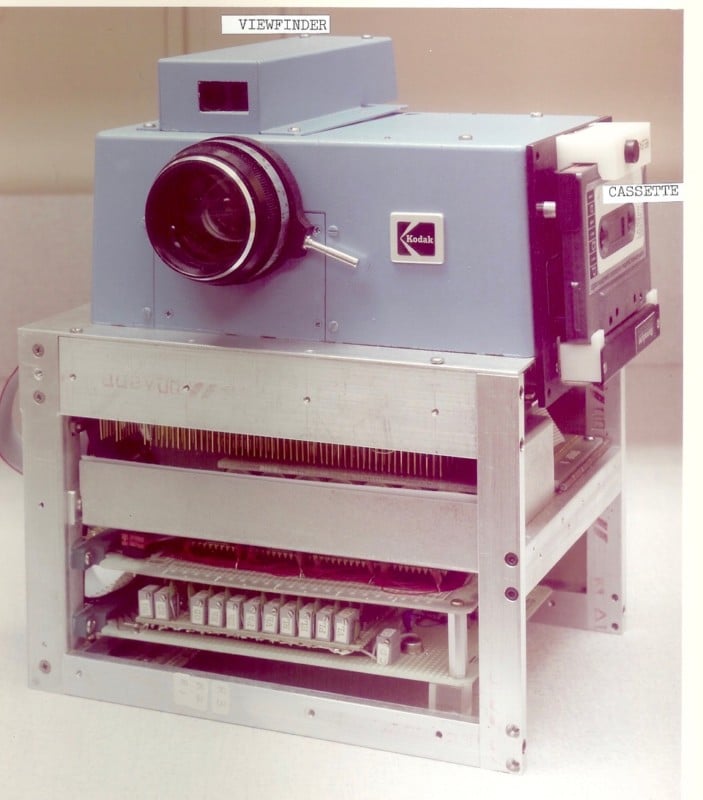
The images were recorded on Phillips 300-foot cassette tapes. Typically, only two photos were saved on each tape, but they could have stored about 30 in terms of length and bit density. However, you quickly run out of tapes, so they are erased and reused.
It was an ongoing experiment, constantly trying to improve the quality. They were not thinking of some historical milestone. Their main concern was to make it work better and faster. Sometimes, the camera would not work mainly because the CCD is unstable.
The Pushback at Kodak
The photo, it was presumed then, would have to be viewed on an electronic screen, which was a TV screen. The resolution and color rendition of a photo print was far better than an NTSC signal on the TV at the time. Prints have been with us for 100 years, and it was a great way to preserve photos, store them, retrieve them, put them into books — obviously, there was a big business there. They also felt that people were happy with that approach, so suggesting that they would store and retrieve images electronically was entirely alien.
So, it wasn’t just the fidelity of the image. It was also the convenience and the structure and infrastructure with it.
“But there was a lot of pushback on it,” says the inventor. “Which I thought was odd because we had the slide business with people sitting down and looking at slides projected on the wall, but that didn’t make much difference.
“That was the pushback [that it did not have enough detail], but it wasn’t the only pushback. Even if you had excellent resolution, the restriction would have been in the technical limitations in the NTSC or in the case of Europe PAL.
“So, it was right to push back on that, 110 film was not a Kodachrome slide, so if you were taking pictures with a 110 camera, you would get a resolution far inferior to a 35mm slide.”
A Calculator or a Camera
“The question that was often asked is how could this become a consumer device?” remembers Sasson. “In fact, would consumers even accept a digital camera-oriented device?
“I had to go to analogies when I was presenting. I said, think of the future camera as a calculator that had just been coming out. HP came out with their HP 35 a few years before, and others were coming out with calculators. That was the only digital product that was somewhat of a consumer product.
“Consumers were starting to use calculators a little, and so I said think of a calculator with a lens. That’s how I envisioned the camera, getting small enough to be like a calculator.
“I said consumers would accept a calculator if it could be improved to the point where it could process all these images. Put the lens and the CCD in, then that calculator could also be a camera, and the size of the calculator is tiny compared to what I was showing.
“That was the vision I suggested in the 1975 meetings. It was a comprehensive attempt without much data to back it up.”
This was roughly a decade before the Macintosh computer was unleashed on the world and about a quarter century before Windows XP appeared. To Kodak management, the word “digital” was risky and unknown.
“They [Kodak] did not like the word ‘digital’,” says Sasson. “A completely digital product made it seem more distant, as odd as that seems today, because there were no consumer Digital Products.
“Digital as a technology seemed esoteric, a bit complicated, lots of wires, integration was relatively small, microprocessors were just coming out, but they were very awkward to work with and didn’t have a good reputation. The fact that it was digital made it even more distant, futuristic, complicated, and risky.
“When I wrote a technical report, and when I applied for the patent granted in 1978, I mentioned it as electronics still camera, not a digital still camera, for that reason.
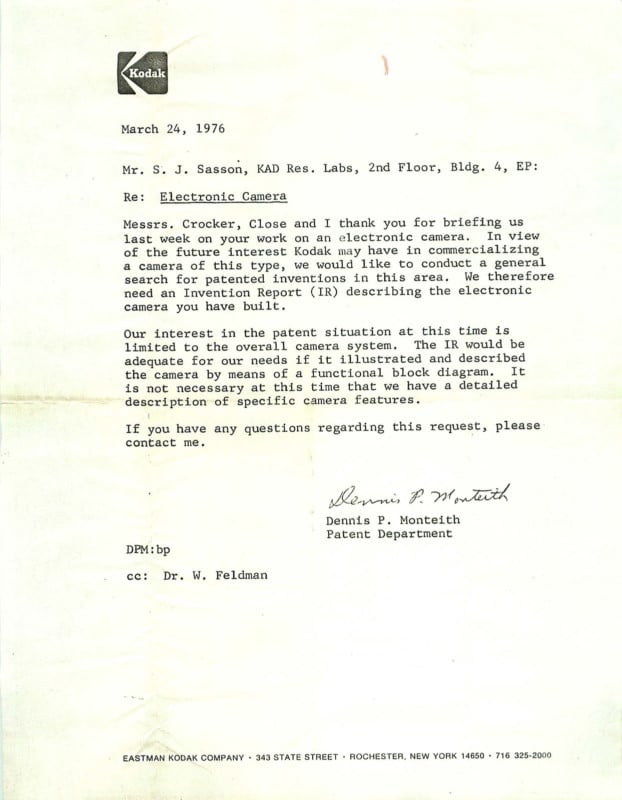
Here’s the technical report Sasson wrote, titled “A Hand-held Electronic Still Camera and its Playback System”:
Where is the Camera Today?
“The camera itself I have kept; it still exists. It’s up in Kodak now,” says the inventor. “It was in the Smithsonian for several years. They brought it back and have it in the museum at Kodak. I kept the camera. I shouldn’t have. It was paid for with R&D dollars. You’re supposed to destroy all that stuff when you’re done with it. Tax thing.
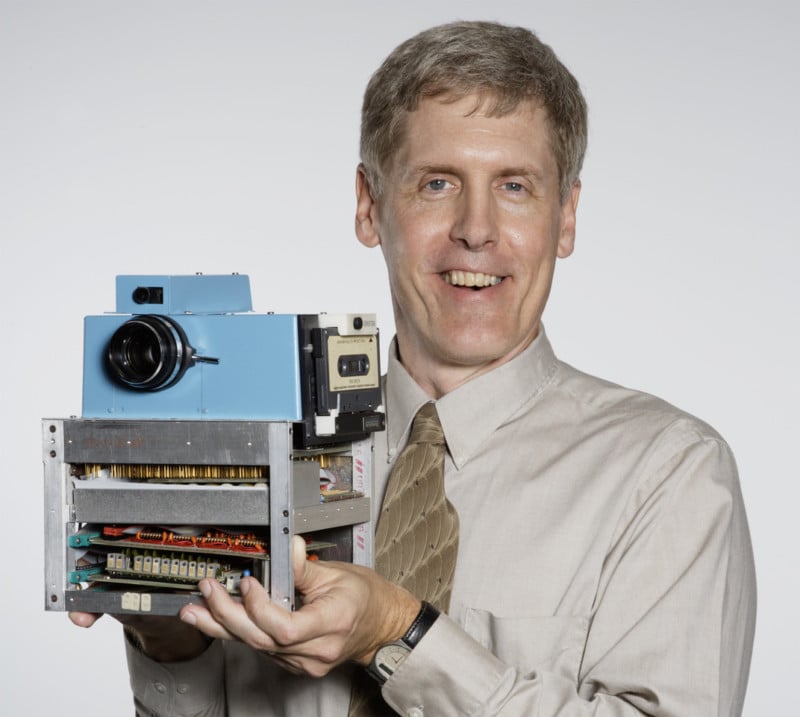
“But I kept the camera because it was too cool to throw away, and nobody cared, so I just kept it. I even lost it once but got it back again. If you see the back of the camera, it says Please Return to Steve Sasson.
“When it started to get popular again in the early 2000s, people were surprised that I still had it. Of course, it is a historical document, so it’s a historical artifact, but nobody cared about the camera then. In that camera was a tape. There is nothing, unfortunately, on that tape.”
Recognition for Inventing the Digital Camera
On November 17, 2009, U.S. President Barack Obama awarded Sasson the National Medal of Technology and Innovation at a ceremony in the East Room of the White House. This is the highest honor awarded by the U.S. government to scientists, engineers, and inventors
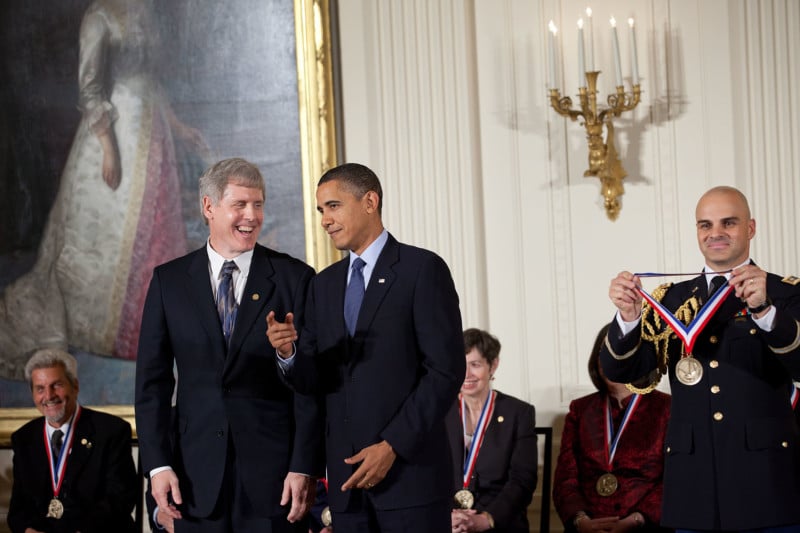
“I was a fortunate guy to be representing the men and women of Kodak … to be the person that gets this notoriety is extremely humbling,” says Sasson.
Before Obama put the medal around Sasson’s neck, the president turned and looked at the photographers in the back of the East Room of the White House and joked with them, “this picture better be good.”
The president evidently likes to take pictures, and met with him privately and had a good conversation about photography. He learned that the president would steal Pete Souza’s camera to take photographs when Souza was not looking.
Looking Back at the Birth of an Industry
“I was not trying to take fantastic [images] as I was limited by the device I was working with,” Sasson says about his pioneering work in digital photography. “It was the only one of its kind and was brand-new. What I was trying to demonstrate was a photographic system.
“This idea of taking [photos] without consuming anything. The only thing that would be consuming would be joules of energy. My idea was the sort of thing I wanted to suggest that consumers could, at some point in the future, take pictures without consuming film, paper, or any of the processing associates. And you could do it right away. That was the idea. So, the idea was let’s create a photographic system and all elements of it. Still, none of the elements were good in image quality compared to the present photographic system.
“I thought my idea would be usable if I could get to 2 million pixels. In my view, I was thinking of in the 2 million – 3 million range, and once we reach that point, the arguments that I had in 1975 would be resolved. It was an acceptable image but low [quality] in consumer photography.
“Now I had no idea that starting in ’97 and ’98, CCDs and eventually CMOS imagers would advance at about a million pixels a year. That was the rate of improvement that I did not think would happen.”
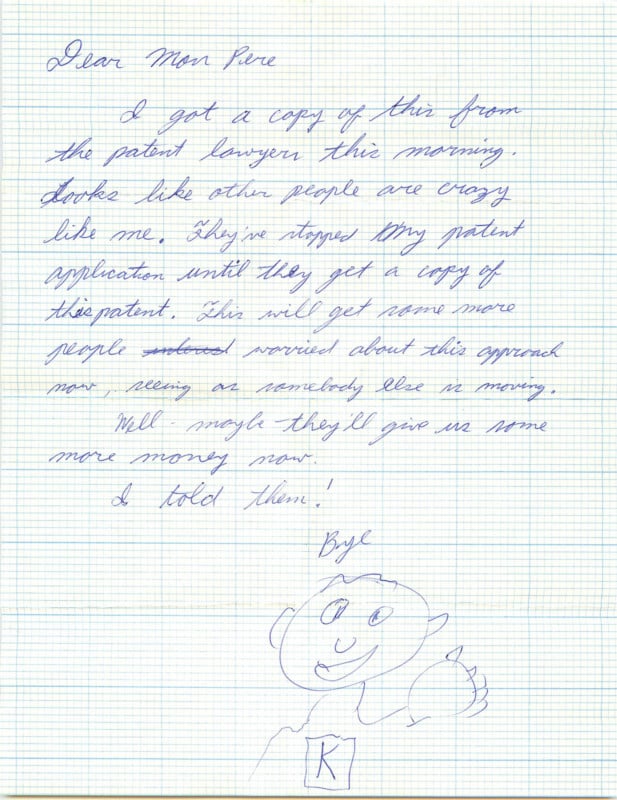
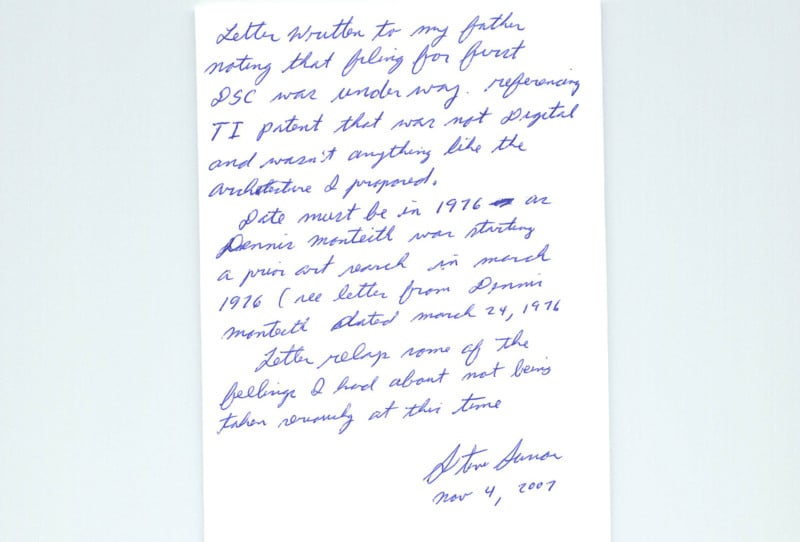
All these years later, Sasson bemoans the fact that Kodak missed the boat when it could have seized first-mover advantage in digital cameras.
“I was sad about [Kodak filing for bankruptcy.] I saw it coming, and Kodak had a resistant attitude towards it. For obvious reasons, they couldn’t make nearly the money from digital that they had made from conventional photography, and I saw this for many years.
“I retired from Kodak in 2009 because I thought they would probably go away. I didn’t want them to, but it was just looking that way. Eventually, I didn’t know what had happened. I could just see that there could have been a different outcome if they could have taken a different approach. Again, it’s tough and very hard to accept that change in your fundamental business model.”
About the author: Phil Mistry is a photographer and teacher based in Atlanta, GA. He started one of the first digital camera classes in New York City at The International Center of Photography in the 90s. He was the director and teacher for Sony/Popular Photography magazine’s Digital Days Workshops. You can reach him here.
Image credits: Photographs courtesy the Eastman Kodak Company
Author: Updated
Source: Petapixel



